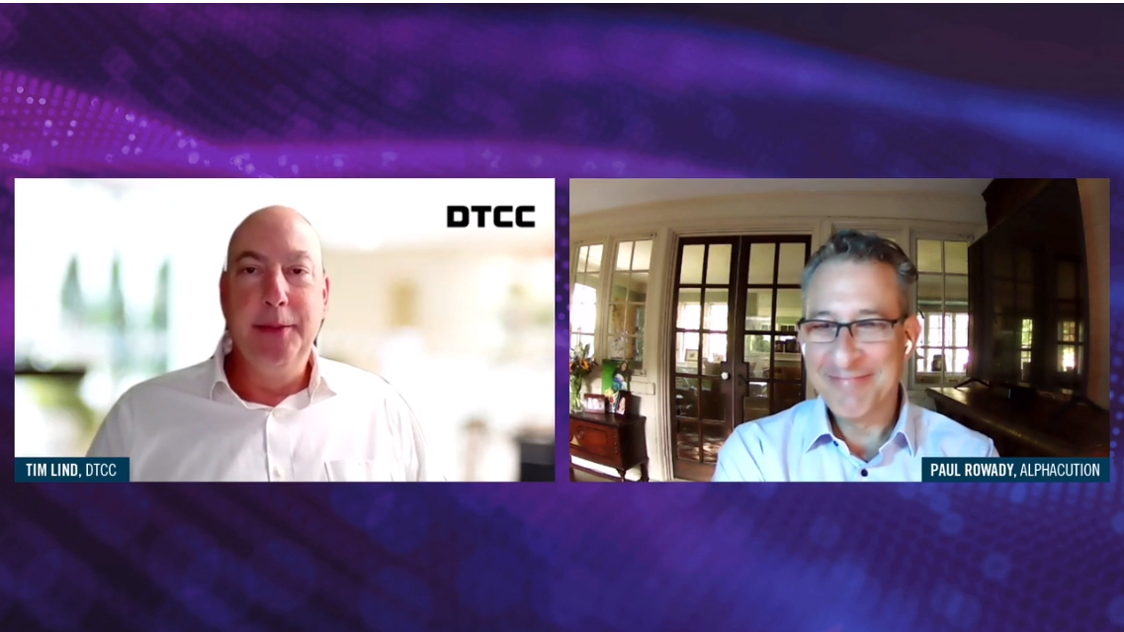Understanding FinTech #Transformation:
In this FIRST of a five part video blog series, Jim Jockle, CMO of Numerix sits down with Paul Rowady, Director of Research at Alphacution to discuss the concept of #Transformation. Jim and Paul provide their perspectives on the latest examples of transformation they’re observing in the financial services industry specifically around the cross section of IT spending trends, software vs hardware investment, human capital expense, IT infrastructure, data management and risk analytics innovations. The five segments cover:
- Defining #Transformation within Financial Services
- Quantifying #Transformation
- The Cost of #Transformation
- #Transformation and TCO: Hewlett Packard Enterprise & Deutsche Bank Case Study
- Investing in #Transformation: What’s the ROI?
Video 1: Defining #Transformation within Financial Services
Jim: Hi welcome to the Numerix Video Blog I’m your host Jim Jockle. Joining me today Paul Rowady, director of research at Alphacution. Paul, thank you for joining us.
Paul: Good to be here Jim.
Jim: Continuing our conversation on transformation a word that’s tossed around a lot, as an analyst, why don’t you give us your definition. How are you see transformation play out within financial services?
Paul: Well there’s two pieces going on here as I think we’ve discussed in the past, it comes down to process. Whether you are going to take an existing process and re-engineer that process or you are going to in fact replace the existing process. Digital transformation is more about – when I think of digital transformation I think of radical. Radical shifts in the capabilities which gets more to the process replacement. I no longer have to buy the camera and the typewriter and the phone and the recorder and the GPS – I can’t have all of that in the same type of device.
That’s the classic example of radical disruption and radical transformation that I don’t have to re-engineer an existing process I actually can swap it out. But a lot of the major players in the ecosystem don’t have the luxury and there’s a lot at stake, there’s a lot of interconnectivity, there’s a lot of regulatory weaving that’s gone on where they’re satisfying regulations. It’s talk about banks being dis-intermediated in this case in financial services but there’s a lot more than just technical dis-intermediation in order to have business dis-intermediation. So I think we have to distinguish between what’s radical and what’s maybe just extension of ongoing evolutionary change management exercises that get lumped under this umbrella of transformation.
Jim: So let’s talk about some of the research you’ve been looking at. How to quantify transformation. I think part of the challenge is almost how do you benchmark that enterprise TCO if you will. Perhaps give us some insight into the way you’re thinking about it.
Paul: So I’ve thought about this for a few years that the way that we model the ecosystem is very labor intensive. And a lot of time analyst platforms are not designed to dedicate so much time to this project. So when I first set out to start Alphacution I made it the center of what we do which is trying to build this model that helps us tell the stories. Typically you would just tell the stories based on outreach or based on experience but now we’re so much more hungry for the data. So the first phase of the modeling is really to define what the landscape is worth. And it turns out if you believe in the case of let’s say the largest banks in the world being among if not the biggest buyers of technology and employment of IT personal in the world in the financial services ecosystem that most of that data is public.
You can go to their annual reports, 10ks and 10qs and look for data points some of which don’t really give you exact transparency but as I like to say to folks that I discuss this with it’s like a massive Soduku puzzle if you can get close to the context you can at least make a better guess than if you can’t observe the number. So what we’ve done is gone out and look at an increasing spectrum of banks and others, but I’ve focused on the banks given how much they do spend on technology. We are numbering 58-60 of the largest banks in the world and we’re now tracking technology spending for that part of the ecosystem that is now in the neighborhood of 240-250 billion dollars a year broken down between IT personnel, hardware and other infrastructure and software which assumes the data is baked in there somewhere.
Jim: Paul thank you so much. We’re going to talk about that in just a few more minutes thanks for joining us Paul and we’re going to continue on quantifying transformation in just a moment.



